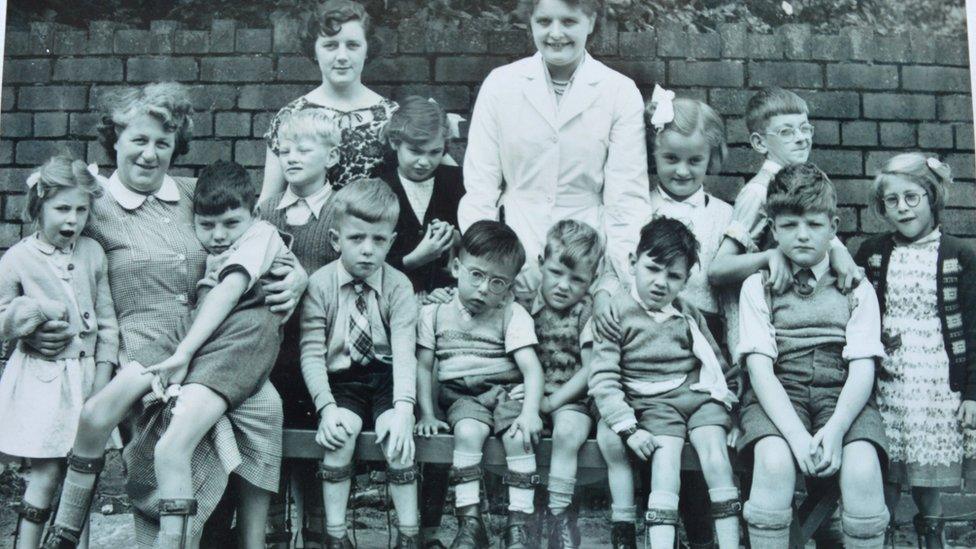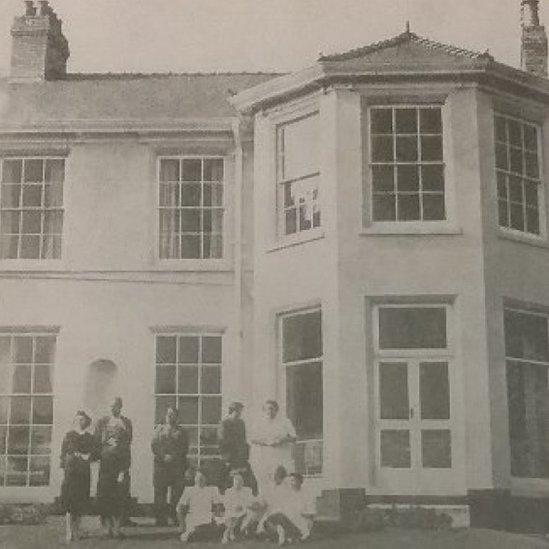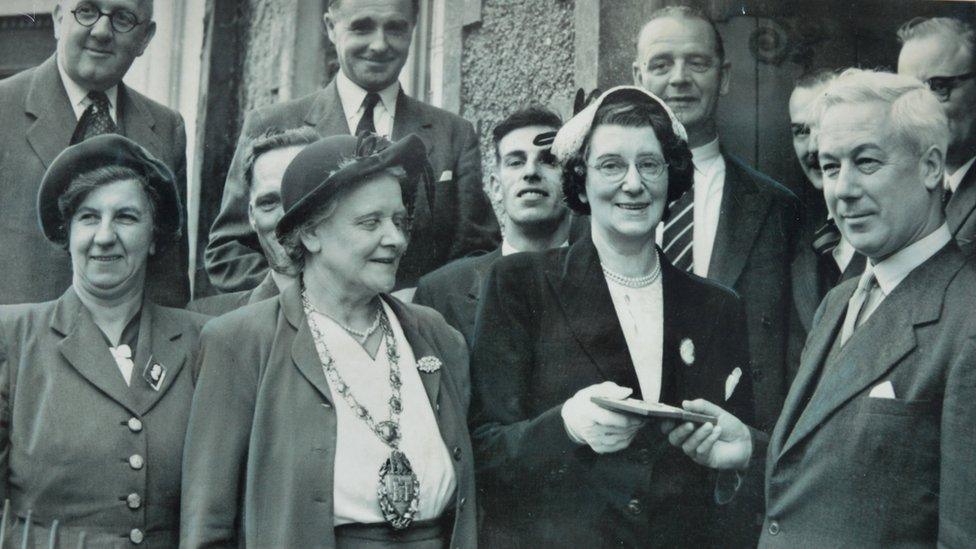Recalling Longfields: School gave disabled children a chance
- Published

A group of the first children to attend the school, with teachers Miss Morris, Mrs Owen and Mrs Hughes
They were the children who were ignored by the education system simply because they had a disability.
Fortunately, their parents were not so ready to give up on them.
In 1953, Longfields school was opened in Swansea for children with cerebral palsy after a campaign by their families - the first school of its kind in Wales.
Now, a project has been launched, external to record people's memories and pictures of the school in an online archive.
Its aim is to celebrate the achievements of the "activist" parents and the significant impact the school had on those who attended it.
Teresa Hillier, who worked at Longfields until it closed in 2011, came up with the idea as she did not want "such a positive place" to be forgotten.
"After the 1944 Education Act, there was little provision for children with disabilities," she said.
"It was thought they couldn't be educated. The parents were told just to take their children home and there was nothing more to be done for them.
"Just because they couldn't speak or couldn't move their limbs, it was felt they couldn't be educated. They were forgotten about."

The school initially opened with nine pupils
But their parents were determined their young children would not be disregarded.
Joining together, they formed a group and rented a room at The Grove in Uplands, Swansea, in 1952 to discuss what could be done.
Led by William Paton, the then-sports editor of the local paper, the South Wales Evening Post, they decided the only thing to do was set up their own school and started fundraising.
"You could describe the parents as disability activists," said Mrs Hillier.
"They were fighting for the rights of their children."
The school opened with nine primary school-aged children a year later in The Grove. In its first annual report it said there was one teacher and a "house mother".

Rose Cross, mayor of Swansea, presenting a silver key to Welsh permanent secretary Ben Bowen Thomas to mark the opening of the school at The Grove
Over the next few years, the school outgrew its premises and moved to the Longfields building in West Cross - thanks to the generosity of a philanthropist called Felicie May Phillipe, who lived in London's Mayfair and read about the school in the Evening Post.
As more schools opened around the country for children with disabilities and additional educational needs, the role of Longfields evolved.
In 1962, it became a work centre - providing employment for some of its former pupils.
"They had a print room there where they printed things like Christmas cards and programmes and the children who were taught there were now able to make money," said Mrs Hillier, who worked at Longfields as an administrator from 1999.
"I would say that was very important for them to go on and work. Like anyone else, you need to get on with your life and progress."

Cerebral palsy symptoms:
Muscle stiffness or floppiness (hypotonia)
Muscle weakness
Random and uncontrolled body movements
Balance and co-ordination problems
These symptoms can affect different areas of the body and vary in severity from person to person. Some people only have minor problems, whereas others are severely disabled.
Some people with the condition may have communication and learning difficulties, although intelligence is often unaffected.
Source: NHS Choices, external

An occupational therapy unit opened on the site in 1967, then in later years it also became a day centre, providing activities and support for adults with learning disabilities.
Swansea-born actress Catherine Zeta Jones was a patron of the centre and visited it with her husband Michael Douglas in 2005 to open a hydrotherapy pool.
Following a merger with another charity, the centre closed in 2011, after almost six decades in operation.

Catherine Zeta Jones and Michael Douglas at the centre in 2005
The legacy of Longfields will now be celebrated as part of the Swansea University research project to create an online archive of people's memories, stories and pictures.
Researchers, including Mrs Hillier, are hoping to get in touch with people who worked at or attended the school and day centre, along with those in the community who supported it.
The material gathered will also form part of an interactive exhibition at Swansea's Waterfront Museum in May 2018.
Richard Bellamy, head of the Heritage Lottery Fund in Wales, which is supporting the project, said: "The Longfields project will capture these elements of our shared history that is in danger of disappearing as it slips out of human memory."
Indeed, it was the fear Longfields' achievements would be forgotten that spurred Mrs Hillier into doing something about it.
"It was certainly a unique place - these children had nothing, no provision at all - but then the school provided them with an education," she added.
"I have got very good memories of working there and getting more of an understanding of issues faced by people with disabilities.
"It was a very, very positive place. It was a little community on its own and it is important to recognise its place in Swansea's history."
- Published7 January 2011